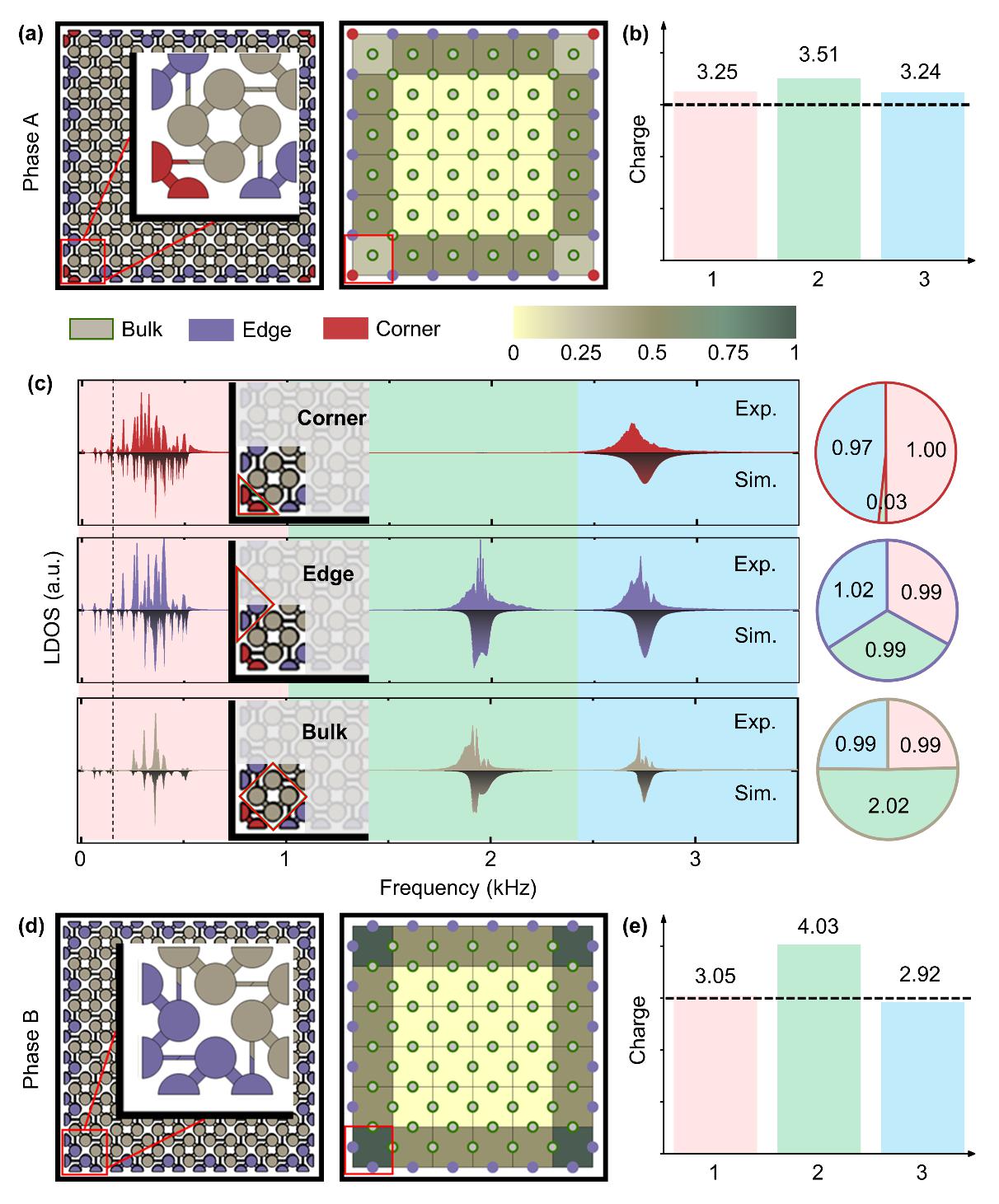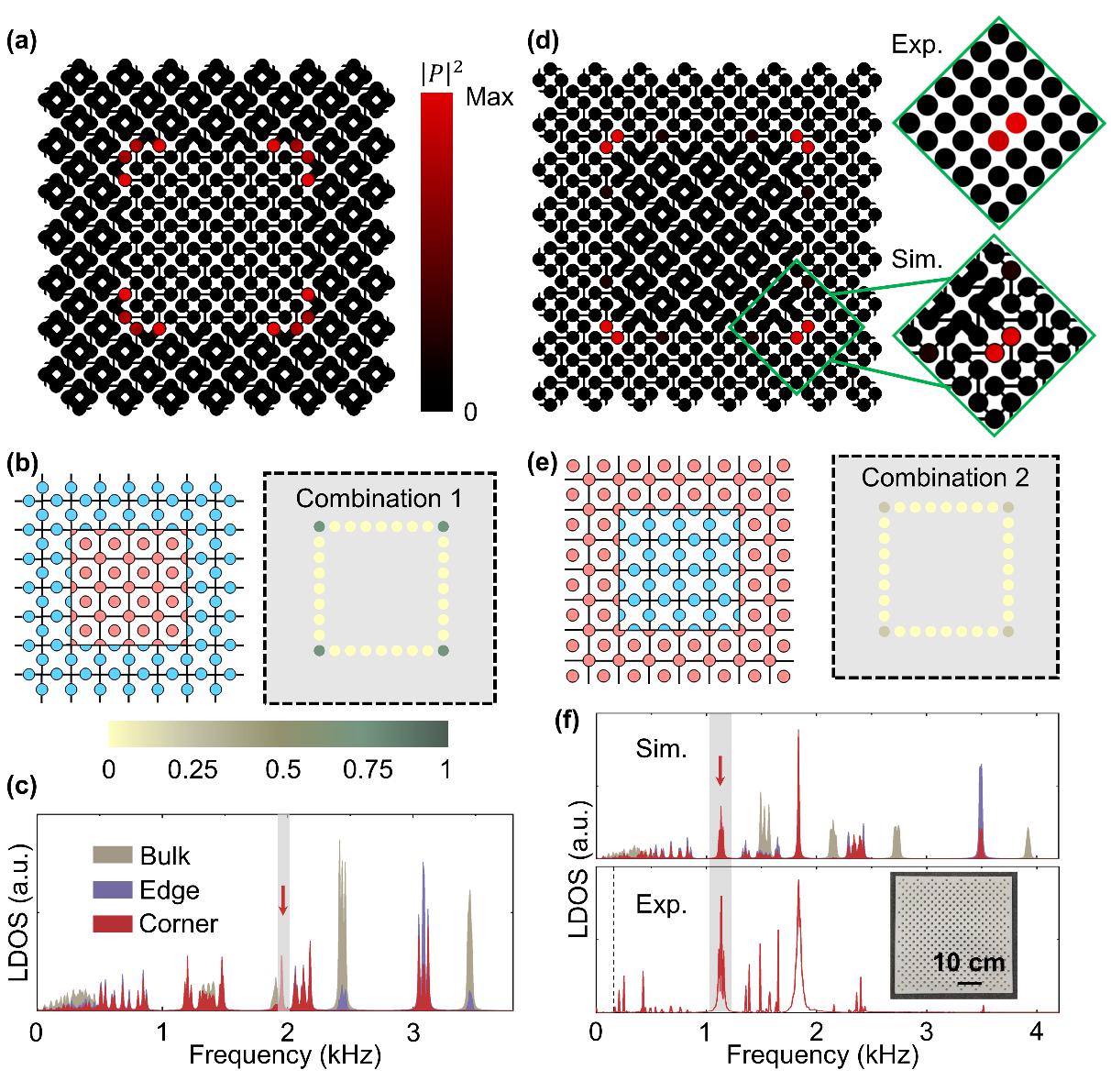The research of topological acoustics originates from the aim of realizing complex topological mechanism in condensed matter physics by using acoustic artificial crystals, providing a new approach for manipulating acoustic waves using the novel wave transport phenomenon. In less than a decade, topological acoustics have provided a series of promising new ideas for the directional control of acoustic field. However, most of the existing studies analyze the topological properties of systems based on Berry curvature framework, which is no longer applicable to acoustic topological crystals with various complex crystalline symmetries. In addition, a large number of acoustic topological states merge in the bulk continuum due to the lack of intrinsic symmetries such as chiral symmetry and particle-hole symmetry, and thus cannot be detected or manipulated.
In view of above issues, researchers from the Institute of Acoustics of the Chinese Academy of Sciences (IACAS), in collaboration with Wuhan University and South China University of Technology, constructed acoustic Wannier configurations by measuring spectral charges in phononic crystals, providing a quantized observable to detect the topological properties of acoustic artificial crystals.
Researchers constructed two topologically distinct Wannier configurations in the two-dimensional (2D) PCs with four-fold rotation symmetry. For each phase, they integrated LDOS spectra over the spectrum band to obtain the spectral charges.
The resultant Wannier configurations of Phases A and B manifest fractional and zero corner charge respectively. The measured fractional spectral charges can characterize topological corner anomaly, revealing the corner mode regardless of its frequency.
It is worth noting that the proposed PCs of Phases A and B do not require fine-tuned boundary compensations and are robust to the possible experimental deformations. Furthermore, the Wannier configurations in different phases are naturally combined to reproduce the corner modes in band gaps. Both the ordinary and the exotic phases can serve as the cladding layers in the combined phononic crystals, providing an anomalous route to engineering in-gap corner modes.
The proposed paradigm has promising applications in acoustic resonators with high quality factors and acoustic energy harvesting, as well as other classical wave systems such as elastic waves and surface acoustic waves.
The research, published in the journal Science Bulletin on March 11, 2023, was supported by the Key-Area Research and Development Program of Guangdong Province (No.2020B010190002), the National Natural Science Foundations of China (No.11890701, No.11874383, No.12104480, No.11974005) and the IACAS Frontier Exploration Project (No.QYTS202110).

Figure 1. Acoustic realizations of Wannier configurations in different topological phases. (Image by IACAS)

Figure 2. Corner modes induced by Wannier configurations of different Combinations. (Image by IACAS)
Reference:
ZHANG Peng, JIA Han, LU jiuyang, YANG Xinghang, WANG Suhao, YANG Yuzhen, LIU Zhengyou, YANG Jun. Observations of acoustic wannier configurations revealing topological corner anomaly. Science Bulletin Volume 68, Issue 7, Pages 679-683. DOI: 10.1016/j.scib.2023.03.015.
Contact:
ZHOU Wenjia
Institute of Acoustics, Chinese Academy of Sciences, 100190 Beijing, China
E-mail: media@mail.ioa.ac.cn


